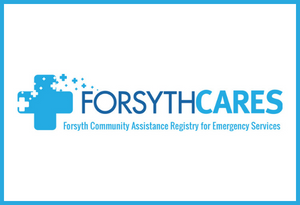- By Ashleigh Sloop
- Posted Friday, October 25, 2013
Halloween Safety Tips
Parents
- Make sure that an adult or an older responsible youth will be supervising the outing for children under age 12.
- Check the sex offender registry at www.ncdoj.gov when planning your child’s trick-or-treat route. You can view maps that pinpoint registered offenders’ addresses in your neighborhood and sign up to get email alerts when an offender moves nearby.
- Plan and discuss the route trick-or-treaters intend to follow. Know the names of older children's companions.
- Make sure older kids trick-or-treat in a group.
- Instruct your children to travel only in familiar areas and along an established route.
- Teach your children to stop only at houses or apartment buildings that are well-lit and never to enter a stranger's home.
- Establish a return time.
- Tell your youngsters not to eat any treats until they return home.
- Review all appropriate trick-or-treat safety precautions, including pedestrian/traffic safety rules.
- All children need to know their home telephone number and how to call 9-1-1 in case of emergency. Pin a slip of paper with the child's name, address, and telephone number inside a pocket in case the youngster gets separated from the group.
Motorists
- Watch for children darting out from between parked cars.
- Watch for children walking on roadways, medians and curbs.
- Enter and exit driveways and alleys carefully.
- At twilight and later in the evening, watch for children in dark clothing.
Costume Safety
- Only fire-retardant materials should be used for costumes.
- Costumes should be loose so warm clothes can be worn underneath.
- Costumes should not be so long that they are a tripping hazard.
- Make sure that shoes fit well to prevent trips and falls.
- If children are allowed out after dark, outfits should be made with light colored materials. Strips of retro-reflective tape should be used to make children visible.
Face Design:
- Do not use masks as they can obstruct a child's vision. Use facial make-up instead.
- When buying special Halloween makeup, check for packages containing ingredients that are labeled "Made with U.S. Approved Color Additives," "Laboratory Tested," "Meets Federal Standards for Cosmetics," or "Non-Toxic." Follow manufacturer's instruction for application.
- If masks are worn, they should have nose and mouth openings and large eye holes.
Accessories:
- Knives, swords, and other accessories should be made from cardboard or flexible materials. Do not allow children to carry sharp objects.
- Bags or sacks carried by youngsters should be light-colored or trimmed with retro-reflective tape if children are allowed out after dark.
- Carrying flashlights with fresh batteries will help children see better and be seen more clearly.
While Trick-or-Treating:
- Do not enter homes or apartments without adult supervision.
- Walk; do not run, from house to house. Do not cross yards and lawns where unseen objects or the uneven terrain can present tripping hazards.
- Walk on sidewalks, not in the street.
- Walk on the left side of the road, facing traffic, if there are no sidewalks.
Treats:
- Give children an early meal before going out.
- Insist that treats be brought home for inspection before anything is eaten.
- Wash fruit and slice it into small pieces.
- Throw away any candy that is unwrapped or partially wrapped or has a strange odor, color, or texture.
Homeowners/Decorations:
- Keep candles and Jack O' Lanterns away from landings and doorsteps where costumes could brush against the flame.
- Remove obstacles from lawns, steps, and porches when expecting trick-or-treaters.
- Keep candles and Jack O' Lanterns away from curtains, decorations, and other combustibles that could catch fire.
- Do not leave your house unattended.










